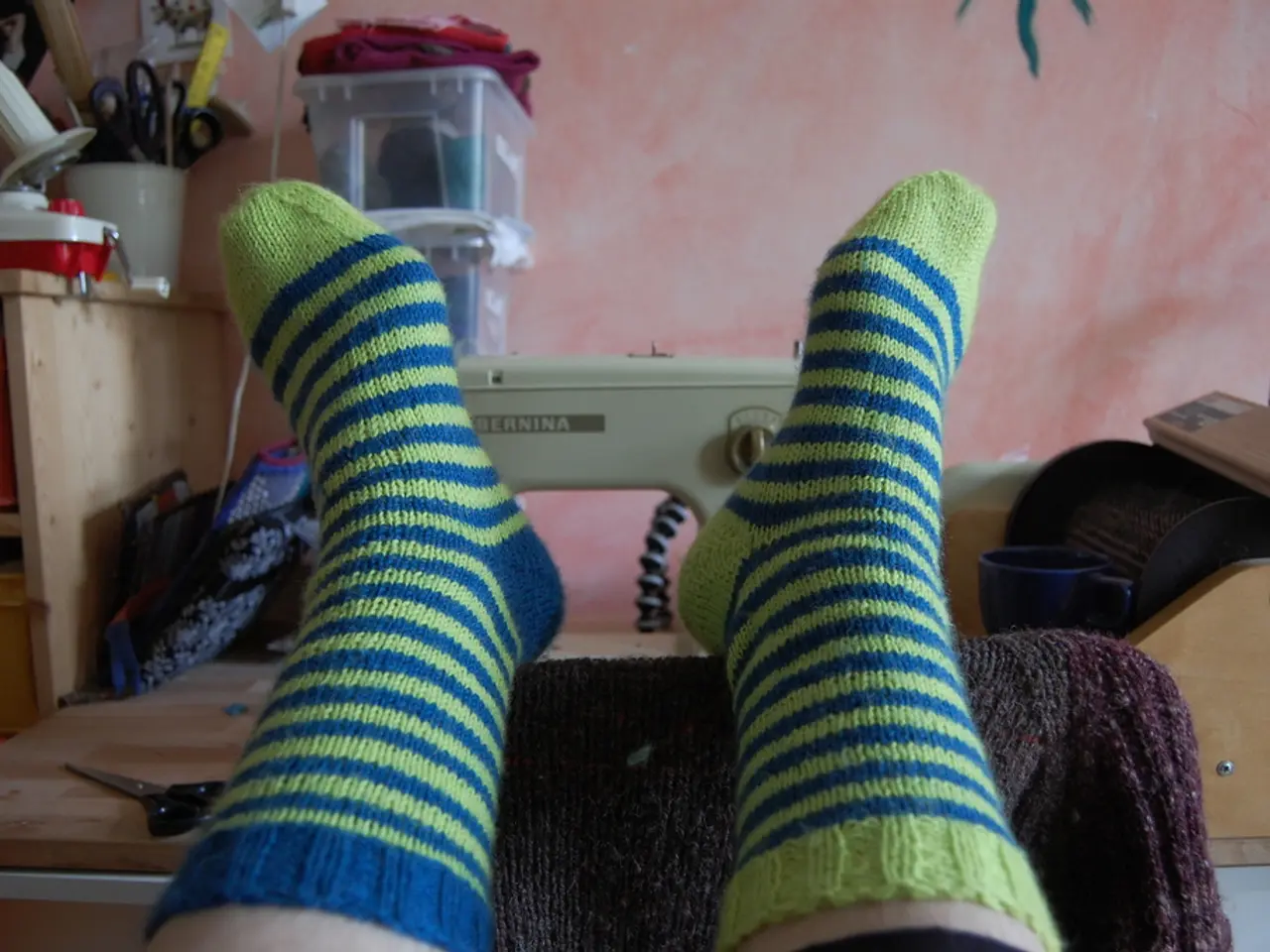Remarkable Fashion Trends, Accent Pieces, and Sartorial Lessons Worth Admiring Across Over Two Decades of Global Adventures
Cultural Significance in Fashion: A Global Perspective
Fashion is more than just clothes and accessories; it often carries deep cultural significance, rooted in history, identity, and craftsmanship unique to their regions. Let's explore some of the world's most iconic clothing styles, trends, and accessories and delve into their rich cultural meanings.
Sri Lankan Batik
Batik in Sri Lanka is a wax-resist dyeing technique on fabric that often depicts nature and spiritual motifs. It serves artistic and ceremonial purposes, reflecting local stories and traditions.
Paisley
Originating in ancient Persia, paisley patterns symbolise life and eternity in those cultures. The teardrop-shaped motif became globally popular through textile trade and colonial influence.
Clogs
Traditional wooden shoes common in parts of Northern Europe, such as the Netherlands, originally served practical purposes for wet conditions but now often reflect rural heritage.
Northern European Sámi Gákti beadwork and embroidery
The Sámi people’s Gákti garments incorporate beadwork and embroidery rich in symbolic colours and patterns, denoting family, region, or social functions, and used in ceremonies.
Andean Qulla Hat
Indigenous to the Andean highlands, these hats signify cultural identity and are often used in traditional festivals or rituals.
Turkish Kaftan
A flowing robe historically worn by Ottoman sultans and elites, the kaftan symbolises status and wealth, often richly embroidered and crafted in luxurious fabrics.
French Beret
Associated with French culture, especially Basque origins, the beret is a symbol of regional identity, artistic bohemianism, and military heritage.
Huipils from Mexico and Central America
Embroidered traditional blouses worn by indigenous women, huipils convey ethnic identity, social status, and spiritual beliefs through their woven symbols and colours.
Nose Rings in India
A significant tradition in parts of India, nose piercings are often linked to marital status, beauty standards, and Ayurvedic beliefs about health.
Dirndl from Germany and Austria
Originating from Alpine peasant attire, the Dirndl reflects rural heritage, folkloric identity, and has evolved into festive traditional wear.
Hmong Embroidery
The Hmong people’s elaborate textile arts communicate clan identity, spiritual protection, and oral histories, especially through detailed embroidery and applique.
Scottish Kilts
Symbolising clan heritage in Scotland, kilts feature tartan patterns unique to family or region, worn during ceremonies and cultural events.
Cheongsam/Qipao from China
This elegant form-fitting dress has origins in Qing dynasty Manchu dress, later modernised. It reflects femininity, social status, and Chinese aesthetics.
American Cowboy Boots
Rooted in Western ranch culture, these boots combine practicality with a symbol of rugged independence and American frontier spirit.
Ponchos from Peru, Bolivia & Chile
These woven garments protect against the cold Andes and display indigenous weaving patterns symbolising local identity.
British Mini Skirt
Emerging in the 1960s, the mini skirt became a cultural icon reflecting youth liberation and modern fashion revolution.
Pashmina from Kashmir, India
Fine wool shawls noted for luxurious softness, representing Kashmir’s extraordinary artisan textile tradition.
Japanese Kimono
Integral Japanese garment with formal and seasonal variations, the kimono embodies social status, occasion, and centuries-old customs.
Woven Sashes from Guatemala
These sashes, part of traditional Mayan dress, signify community and personal identity with intricate weaving techniques.
Indian and Pakistani Turbans
Indicative of religious, regional, or social identity, turbans vary widely in style and significance across South Asia.
Ikat Weaving from Uzbekistan
A specialized dye-resist technique creating bold geometric patterns, ikat fabrics are prized cultural heritage items signifying craftsmanship.
Tibetan Beaded Jewellery
Often used in spiritual and ceremonial contexts, Tibetan jewellery incorporates symbolic stones and designs, reflecting Buddhist beliefs.
Espadrilles from Spain
Traditional canvas-and-jute shoes originally worn by laborers, now a global fashion piece echoing rustic Mediterranean lifestyle.
Ghanaian Kente Cloth
Handwoven silk and cotton fabric featuring bright, symbolic patterns representing history, philosophy, and status in Akan culture.
Peranakan Kebaya from Malaysia
A fusion garment blending Chinese and Malay influences, the kebaya features delicate embroidery and symbolises Peranakan cultural identity.
Madras Check
Originating from the Indian city of Madras (Chennai), this colourful plaid fabric became popular worldwide due to colonial trade, reflecting warm climates and casual style.
Nigerian Cowrie Shell Adornments
Historically used as currency and spiritual symbols, cowrie shells in adornment signify wealth, fertility, and connection to ancestors.
Panama Hat from Ecuador
A finely woven straw hat indigenous to Ecuador, misnamed for its association with the Panama Canal; it signifies artisanal skill and tropical elegance.
Kolhapuri Chappals from India
Handmade leather sandals known for their intricate braiding and durability, originating from Kolhapur, Maharashtra.
Southeast Asian Sarong
A versatile fabric wrapped garment worn by various ethnic groups, symbolising cultural identity and often patterned with region-specific motifs.
Respecting the origins of these cultural treasures is crucial to avoid cultural appropriation or misrepresentation. Modern fashion often draws inspiration from these, but understanding and appreciating their rich cultural significance is essential.
- The Sri Lankan Batik, with its nature and spiritual motifs, serves not only as a piece of art but also as a medium to reflect local stories and traditions, adding to the cultural significance of fashion on a global scale.
- Paisley patterns, originating in ancient Persia, carry symbols of life and eternity, showcasing how fashion can transcend borders and carry deep cultural meanings.
- The French beret, associated with French culture, signifies various aspects of identity, from regional roots to artistic bohemianism, making it a significant symbol in the lifestyle and fashion-and-beauty world.
- Indigenous to the Andean highlands, the Qulla Hat signifies cultural identity, much like the Dirndl from Germany and Austria, which has preserved rural heritage and folkloric identity.
- The Cheongsam/Qipao, a Chinese garment with origins in Qing dynasty Manchu dress, reflects femininity, social status, and Chinese aesthetics, demonstrating how fashion can embody cultural values and historical influences.




